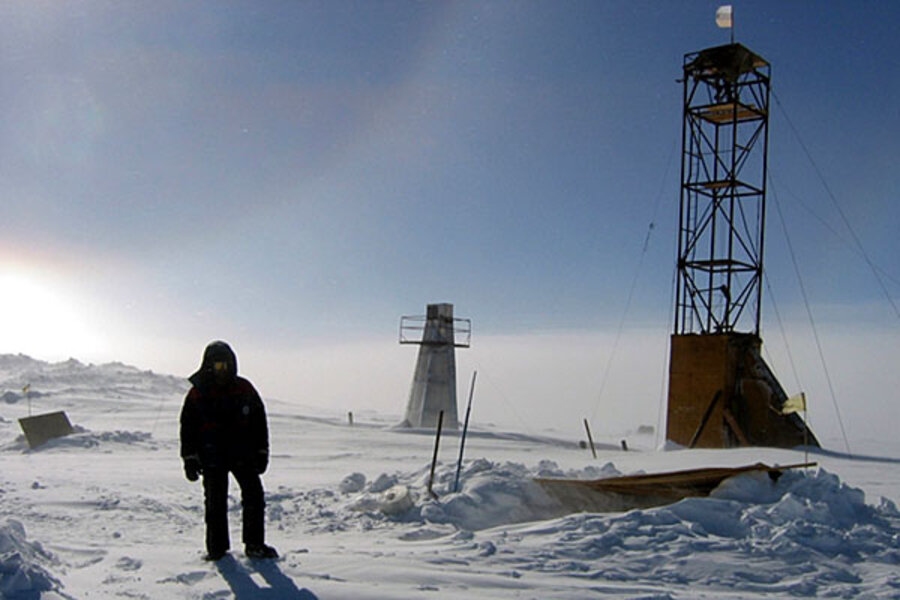Russians reach mysterious lake 2.4 miles below Antarctic ice
Loading...
| Moscow
After more than two decades of drilling, Russian scientists have reached the surface of a gigantic freshwater lake in Antarctica that had been hidden under miles of ice for 20 million years, potentially holding life from the distant past and a clue to the search for life on other planets.
Reaching Lake Vostok is a major discovery avidly anticipated by scientists around the world hoping that it may allow a glimpse into microbial life forms that existed before the Ice Age. It may also provide precious material that would help look for life on ice-crust moons of Jupiter and Saturn or under Mars' polar ice caps where conditions could be similar.
Valery Lukin, the head of Russia's Arctic and Antarctic Research Institute (AARI) in charge of the mission, said in Wednesday's statement that his team reached the lake's surface Sunday.
RELATED: Are you scientifically literate? Take our quiz
"There is no other place on Earth that has been in isolation for more than 20 million years," Lev Savatyugin, a researcher with the AARI who was involved in preparing the mission, told The Associated Press. "It's a meeting with the unknown."
Savatyugin said that scientists hope to find primeval bacteria that could expand the human knowledge of the origins of life. "We need to see what we have here before we send missions to ice-crust moons, like Jupiter's moon Europa," he said.
The project, however, has drawn strong fears that 60 metric tons (66 tons) of lubricants and antifreeze used in the drilling may contaminate the pristine lake. The Russian researchers have insisted that the bore would only slightly touch the lake's surface and a surge in pressure will send the water rushing up the shaft where it will freeze, immediately sealing out the toxic chemicals.
Lukin said in a statement that about 1.5 cubic meters of kerosene and freon poured into tanks on the surface from the boreshaft, proof that the lake water streamed from beneath, froze, and blocked the hole.
The scientists will later remove the frozen sample for analysis in December when the next Antarctic summer comes.
Lake Vostok, about 3.8 kilometers (2.4 miles) beneath the surface, is the largest in a web of nearly 400 known subglacial lakes in Antarctica, and scientists in other nations hope to follow up with similar projects. The lake is 250 kilometers (160 miles) long and 50 kilometers (30 miles) across at its widest point, similar in area to Lake Ontario.
"In the simplest sense, it can transform the way we think about life," NASA's chief scientist Waleed Abdalati told The Associated Press by email.
Scientists believe that microbial life may exist in the dark depths of the lake despite high pressure and constant cold — conditions similar to those expected to be found under ice crust on Mars, Jupiter's moon Europa and Saturn's move Enceladus.







